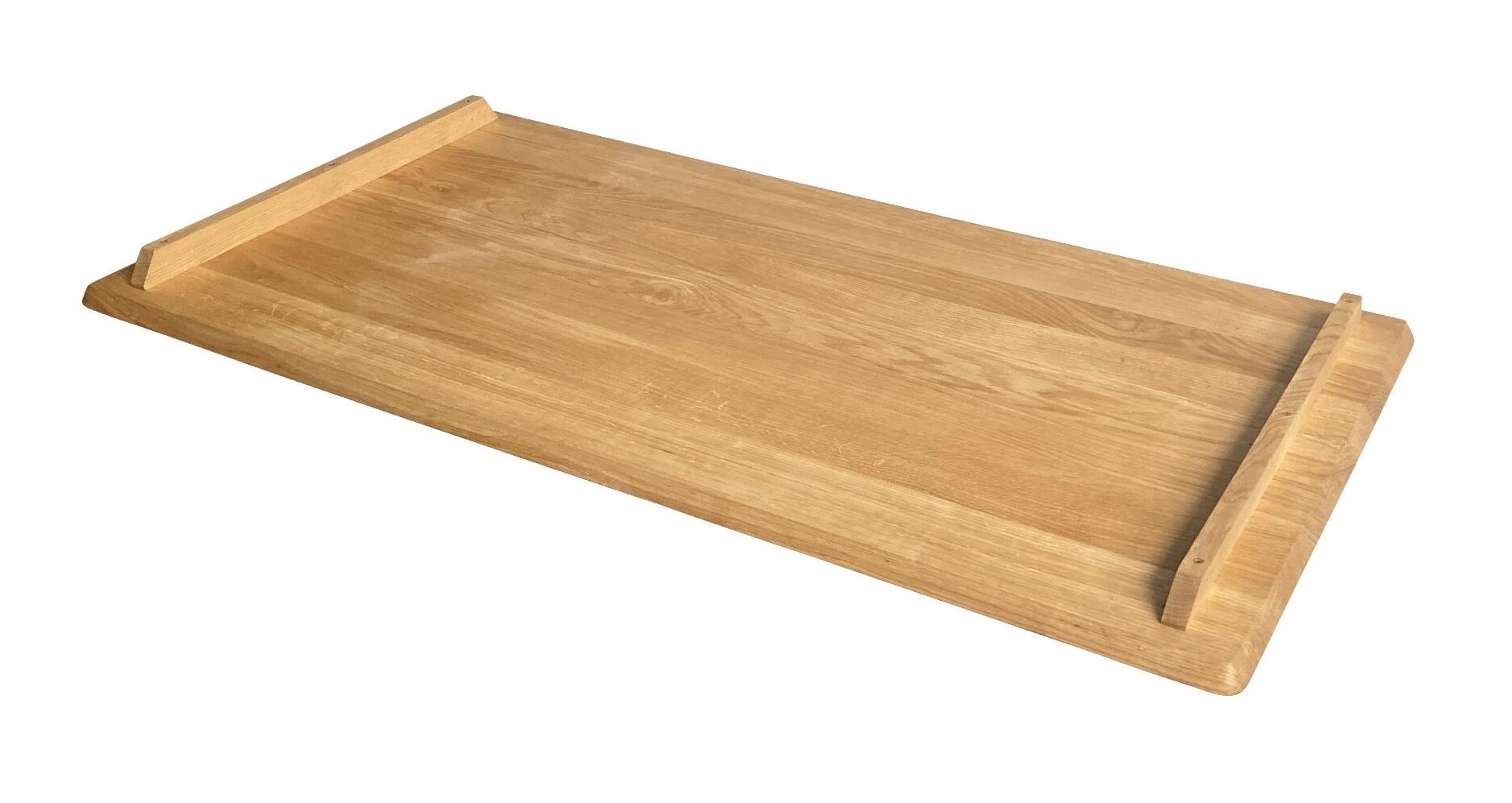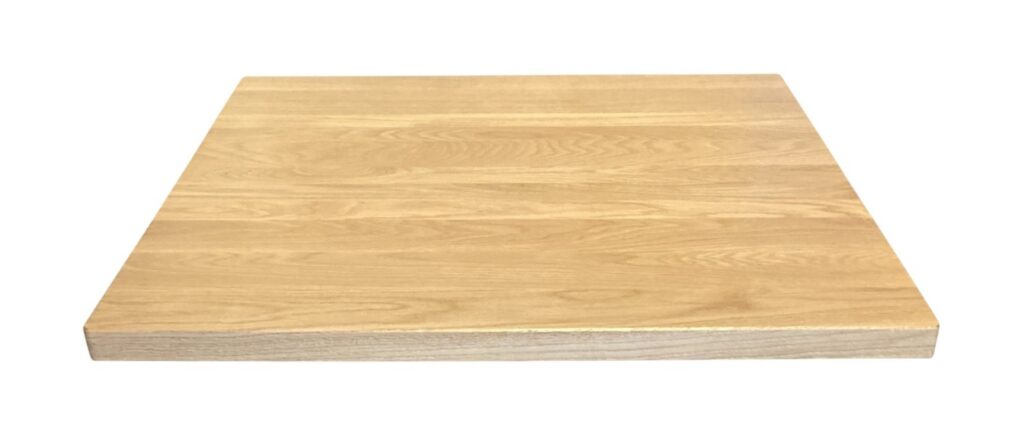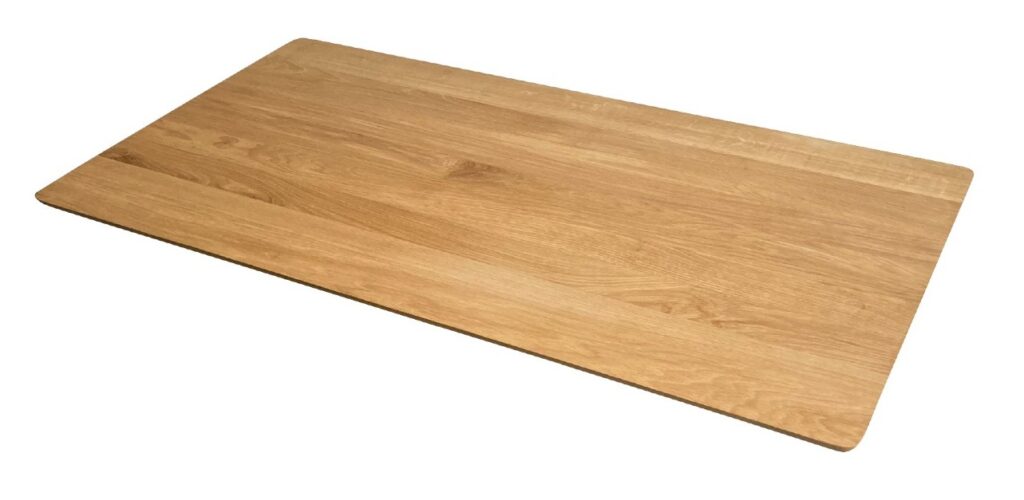Tables and tabletops that we make come with wooden battens or metal strips on the underside positioned horizontally across the grain, which we call straightening bars.
Without these bars there is a tendency for the wood to warp – it could be only a matter of a few millimetres or it could be very noticeable, especially at the ends.

The effect is called cupping (curling up or down) and is a natural result of wood movement as it absorbs and then loses moisture in the environment. The wood expands widthways as the fibres fill with moisture they have absorbed, and then it contracts as it dries. If not countered, this ongoing process can stretch the wood and sometimes leaves it mis-shapen.
Adding wooden bars across the grain
Wooden bars across the grain work by physically holding the wood surface flat. The bars are ideally mounted fairly close to each end, although the exact placing will depend on the intended leg or base position.
Bars are usually made of the same material as the top, in our case this is most often solid oak. Typically we make them the same width as the top is thick, and slightly higher. For example on a 30mm thick tabletop the bar would usually be 30mm wide and 40mm high.
As well as a highly practical feature, we see the bars as a design element which results in a more interesting looking piece. To make sure they are in balance with the top visually, we set them in from the edges. With some styles we shape the corners of the bars to reflect the edge profile of the tabletop. In custom orders this shape can be altered.


Being a natural material, wood is subject to environmental conditions and we cannot guarantee there will be no cupping effect at all. In our experience, with bars fitted correctly, it is minimal to the point of it being a non-issue.
Removing or repositioning wooden bars
You can remove them if you prefer, as they are screwed, rather than glued. As well as allowing the option for removal or repositioning, by not gluing them the wood can still move a little with them in place – without that flexibility it could split. If they are to be removed, please bear in mind the tendency for the wood to cup unless you are planning to fix it down to something else that is wide and strong such as the metal base of a sit/stand desk or a traditional wooden table frame.
Adding metal bars across the grain
Most of our tables have wooden bars but some do have metal instead for aesthetic design reasons. One potential advantage of metal bars over wood is that they can be mostly hidden within a groove in the underside, so if you like a minimalist style, it’s a good option when making a custom order. For others who prefer the extra detailing that the wooden bars provide, metal may not be the preference.
Removing or repositioning metal bars
Like their wooden counterparts, metal bars are simple to remove, as they a only screwed in. However, as they are partially slotted into grooves, the most practical way you can reposition them after the top has been made is to remove then turn them upside down so that the section of the bar that was hidden is now visible. It will function the same as if it was placed within the top but may be noticable from a low angle.
Ordering a table or table top without bars
You can contact us to request we don’t add bars, and we will leave them out. In this instance, please note that we cannot take responsibility for wood being cupped upon arrival with you. The process may occur – or be exacerbated – during transportation in, for example a damp courier’s storage depot or humid delivery van.
Other steps to counteract cupping
Controlling the moisture levels
All of our wood is kiln dried before use so its moisture content has already been hugely reduced compared to freshly sawn (sometimes called ‘green’) wood. This helps to prevent extreme cupping but it will not stop it entirely.
Setting the grain direction
When a top has one side longer than the other, i.e. a rectangle or oval as opposed to square or circle, we make sure that the grain of the wood always runs longways. If the grain direction side is shorter that the width, the cupping effect tends to be much more pronounced.

If you have any questions about straightening bars on our tables or table tops, please get in touch.
